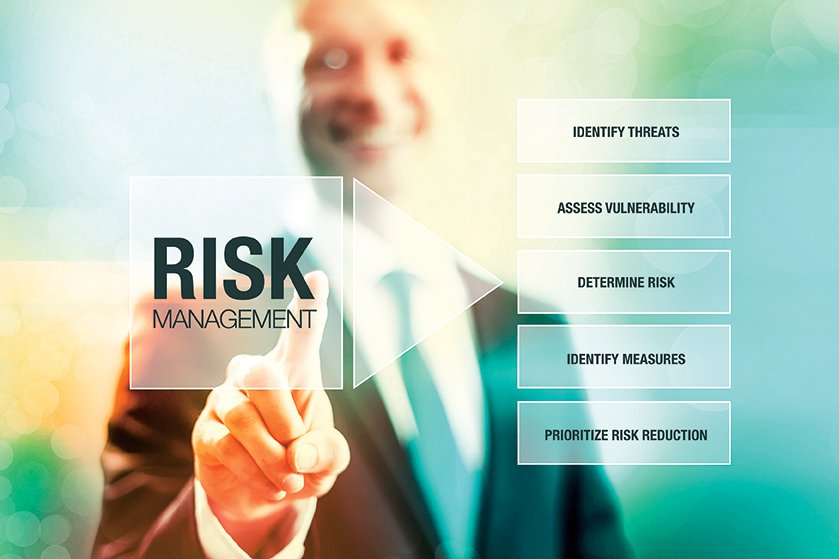If you have money to invest, you’re vulnerable to con artists
By Okey Chigbo
Photo: iStock/Andrii Yalanskyi.
Investment scams are everywhere. It doesn’t matter where you live, whether in a big city or a small town—in this wired age, investment con men and women can find you. Sometimes they don’t even have to find you, because, if you’re not careful, you’ll find them yourself. FAIR Canada (Canadian Foundation for Advancement of Investor Rights) reports that one in 10 Canadians say they have invested money in what turned out to be a fraud, though according to a 2017 study commissioned by the Canadian Securities Administration (CSA), the number of victims is more like one in 25 Canadians.
Lina Creta, a CPA and the manager of investor engagement and outreach at the Ontario Securities Commission (OSC), says that while “slightly more Canadians are reporting suspected fraud, rates remain relatively low.”
But don’t think you are invulnerable because you are wiser and smarter than the “suckers” who fall for these things. Those aged 50 to 60 are most at risk, according to the federal government’s Canadian Anti-Fraud Centre (CAFC). There are many reasons you could easily become a victim. Among the risk factors is being in an emotionally vulnerable state.
In the three years that Andrea K.,* 59, was separated from her husband, she lost approximately $175,000 to two investment cons, one of which has been identified by the CAFC as a red alert scam.
“I had also lost my job and wasn’t sure how I would make money when I discovered binary options online,” she says. “I had been investing in mutual funds since I was 16, so I felt I had a really good grasp on the elements of trading.”
According to the CAFC website, binary options “work much like a wager”: investments are made based on how an asset is expected to perform in a given time period, and investors win or lose all their money depending on whether they are right or wrong. The RCMP (which declined to comment on this story but sent general comments in an e-mail) identifies binary options as one of the most common investment scams.
Binary option scams—usually found online—reel the unwary investor in by offering a very high rate of return (Andrea K. says from 50 per cent to 90 per cent) and by promising either to be risk-free or to pose very little risk. Generally, that’s a serious indication of a scam: high return and low risk don’t usually go together—high return is usually associated with high risk. Binary options add the trick of initially giving an investor the false impression that he or she is making money. Andrea K. was amazed at the large gains earned with her small initial investment and spoke enthusiastically about the investment to her friends and family.
But according to the RCMP, there’s no way to access your gains, because they don’t exist—as Andrea K. eventually discovered. By then, however, she had given the fraudsters a substantial amount of money. The RCMP and the CAFC website both warn that there are no businesses authorized to sell or market binary options in Canada. The CAFC warns that investors in binary options “run the added risk of having their identity stolen, accumulating losses for unauthorized withdrawals on their credit cards, and incurring high interest payments on an investment that does not exist.”
The OSC’s Lina Creta reports that people approached for fraudulent investments are “most often contacted by phone or e-mail and didn’t have a strong relationship with the potential fraudster.” But simply avoiding phone and e-mail investment offers from people you don’t know may not save you from being conned. Creta adds, citing CSA research, that “one in 10 [potential victims] reported having been introduced to a potential fraudster through a friend, neighbour, co-worker, or family member, and about one in five reported developing a strong level of trust in the person who approached them.”
Creta says that “fraudsters may directly target older individuals because of the relatively high levels of assets they hold as a result of lifetime saving and investing.” In fact, she points out, research shows that Canadians aged 65 and older are most likely to say that they have invested in what turned out to be a con.
But she adds that there is no typical victim of fraud. “Professional scam artists go where the money is—if you have money to invest, you are vulnerable to fraud. Most successful scams are built on trust. Scammers are very good at manipulating people into making poor investment decisions.”
Creta provides these warning signs of investment fraud:
• You’re told you can make a lot of money with little or no risk.
• You get a “hot tip” or insider information.
• You are pressured to buy right away.
She also cites some examples of common scams:
• The Affinity Scam. Members of a particular group—religious or ethnic communities, seniors’ groups, and social clubs—are targeted or even joined by con artists.
• The Pump and Dump Investment. A phone call or e-mail promotes an incredible deal on a low-priced stock—of which the scammer owns the majority. As more people buy the stock, it rises in value; when it peaks, the majority shareholder dumps all his stock at once, the price plummets, and investors are left holding a worthless stock.
• The Offshore Investment. Investors are promised a high rate of return on an offshore investment—but once they send their money, they can’t get it back.
These cons are generally garden-variety, retail, individual investment cons. But there are also bigger investment frauds involving mid-tier investment companies, major corporations, and sometimes banks. The documentary The China Hustle depicts such frightening situations (generally involving Americans) in which everything seems right because a well-known bank or investment company is selling the fraudulent investment to a relatively large number of investors.
In his book about such wholesale cons—Easy Prey Investors: Why Broken Safety Nets Threaten Your Wealth—the Canadian forensic accountant Al Rosen with co-author Mark Rosen writes, “Canadian investors and retirees are known to be ideal victims for stock market and investment shenanigans: they tend to blame themselves for their losses. They seldom pressure governments to correct blatant and repeated deceptive practices. And they turn their money over to companies like Nortel, Livent, and Sino-Forest assuming that their investments are safe in the hands of presumed honest and competent managers.”
He cites other examples of financial reporting failures in Canada, such as Bre-X, Castor Holdings, and Valeant Pharmaceuticals. “Many of these cases raise repeated themes of alleged elementary deceptions that can be avoided if they are learned and watched for.”
Given all these ways that you can be scammed, how can one invest and avoid being ripped off?
Brian Fredericks, a registered financial advisor with IPC Investment Corporation in Pickering, ON, says that it’s best to know with whom you are investing your money. “Invest with an advisor, one who is experienced, who comes with a reputation and is known to be trustworthy. Are you going to transfer money to the person? Don’t transfer any money to an individual person; transfer in trust to the investment firm that the person is working with. If an individual is asking you to give money to their own business, you should be hesitant. Be very wary of handing money to a specific individual.”
Many sources say that the first thing those who want to invest must do is find out if the person or firm with whom they are investing is registered with provincial or national securities regulators.
Creta says that anyone selling securities or offering investment advice must be registered with the securities regulator in the province or territory where the service is carried out. This information can be investigated at CheckBeforeYouInvest.ca. She adds, “We also have a tool called the ‘Scam Spotter Tool and Investment Fraud Checklist’ that helps you learn how to spot the warning signs of fraud.”
FAIR Canada also encourages investors to do their due diligence by researching the firm or person’s disciplinary history. Fredericks says that a client of his came to him to ask for advice on a syndicated mortgage investment. Syndicated mortgages were popular a few years ago, and they involved builders of apartment blocks and office buildings borrowing money for early construction from private individuals instead of banks. The returns offered by the sellers of these mortgages ranged from eight to 12 per cent, paid quarterly, and the investments were said to be fail-safe: if anything went wrong, investors were told, they would get their money back before everyone else.
Fredericks told his client that syndicated mortgages are considered high-risk investments. Then he investigated the firm selling the mortgages and found that it was defaulting on its dividend payments and was in trouble.
Many unscrupulous people were drawn to selling syndicated mortgages; many investors were wowed by the promise of 12 per cent dividends paid every three months. Not surprisingly, people were burned: any online search for syndicated mortgages will reveal many media stories about people who lost large sums of money—including Andrea K. She invested in two syndicated mortgage development projects and lost over $100,000 of her savings.






